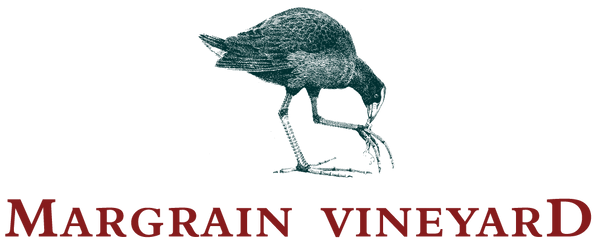




Terroir and the Wine Making Process
Regional Overview
The mighty Tararua Range to the west combined with low hills to the north and east protects this tiny area from rainfall throughout the long dry summer. The Martinborough Terroir is composed on the one hand of a winning combination of free draining, low fertility river terrace soils, low summer rainfall, low humidity, relatively warm days and cool nights and a reliably long autumn. This all works to restrict and then stop vine shoot growth in January (before the ripening period proper) and ensures ripening happens slowly and over a long period and that disease pressure is low. The other face of Terroir is human input and right from the planting of the first vines in 1978 Martinborough was blessed with individuals passionate about making top quality wines. This tradition continues today with winegrowers coming to terms with low vine yields and being prepared to spend inordinately large amounts of time and money in the vineyard to ensure each bunch of grapes has the best possible chance of attaining full physiological and flavour ripeness. The Terroir of Martinborough is most recognisable in its Pinot Noirs with a richness and opulence not consistently seen in Pinot from other New Zealand wine regions. This is something that cannot be bought and sold for it belongs to the region.
Vine Management
Every vine operation with the exception of spraying and a one off annual top trim is carried out by hand necessity at least 20 passes of each vine each year. This is in addition to tractor work such as spraying and mowing of cover crops, and regular monitoring to check disease and general vine health status. Our vine management is a very hands on affair. The majority of the block is trained to the Scott Henry system, which is designed to balance the vines’ physical growth with its capacity to grow. The result is a wall of canopy over 2 metres high and only 2 – 3 leaves thick. This gives each leaf and ultimately every bunch optimum exposure to sunlight and air movement reducing shading and humidity within the canopy. All leaves around the bunches are plucked off by hand early in the ripening period to further enhance this effect. In Pinot Noir especially, this bunch exposure is particularly important for the development of deep red colouration and tannins in the berry skins.
Margrain’s Typical (if there is such a thing?) Pinot Noir Harvest
All harvesting is done by hand as each block is assessed to have reached optimum ripeness. Vines of the same variety and clone and on the same soil type - sometimes just a few rows - are considered as a “batch” and are sampled weekly and sometimes daily towards the end. They are tested for sugar level, acid and pH and most importantly flavour, development so that each batch is harvested at the best possible moment.
Vinification
Pinot Noir is a variety with great subtlety and none of its many facets are present in excess. The aim of the early vinification therefore is to fully coax out the myriad of flavours and the entire colour without extracting any of the bitter elements from the seeds or skins. This is a tight rope but when done successfully results in young wines with warmth structure and opulent fruit characters, pale spent husks are all that remain of the berries after pressing. One of the major techniques, which we employ, is to stack the 8kg picking bins in the chiller overnight and cool the grapes down to about 5 degrees Celsius. They are then de-stemmed and crushed directly into 3000 litre open stainless steel fermenter and left to steep in their own juices for 7-10 days. The cool temperature prevents the onset of fermentation, and with gentle mixing once per day, the extraction of colour and fine-grained tannins occurs gently in the absence of alcohol or heat. This process is termed (rather grandly) pre fermentation maceration. Once ferment begins the plunging of the cap is increased to 4 times per day and temperatures of up to 35 degrees are reached. Extraction of remaining tannins and colour occur at this time and the new wine is pressed off soon after all the sugar is used up. (the point of dryness).
Oak Handling
The young Pinot is transferred to barrel – all French oak Barriques - after a brief overnight settling. We would typically use between 25 –35 % new barrels every year and the barrel hall is kept warm for 6-8weeks to ensure the malolactic fermentation is complete in all barrels. The wine then sits quietly in the same barrel and on full yeast lees until shortly before bottling the following year. We are very happy with the type of oak we use in the pinot Noir and restrict the number of Cooperages to just 3 or 4.
Bottling
The wine is extracted from barrel very gently using compressed Nitrogen gas – (rather than a pump) and original fermenter “batch” is re-assembled from its separate barrel components. Each are tasted and assessed separately before the final blend is made. Following careful trailing a light egg white fining is carried out to remove any slight bitter or rough edges the wine may have and to aid clarification. The wine is racked twice over 2 weeks and bottled without filtration. Filtration is not a process that we feel causes grievous bodily harm to the wine, but in a wine style where excellence is measured in 10ths of a degree we have simply found our preference is to minimise the handling.
